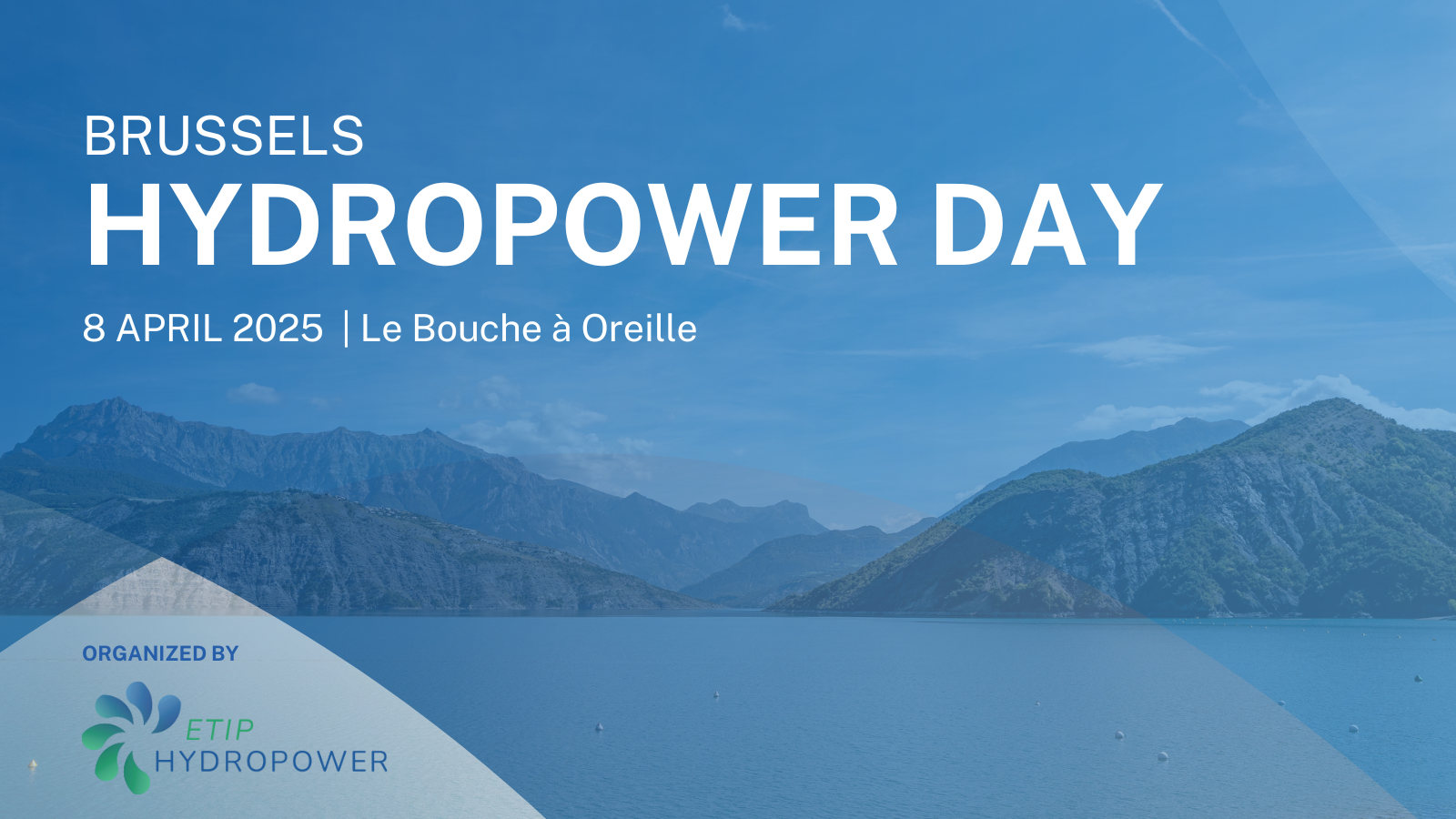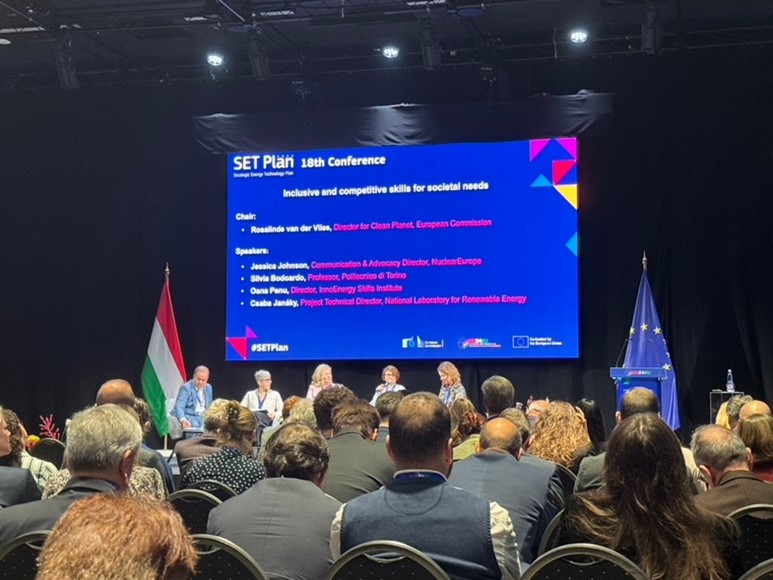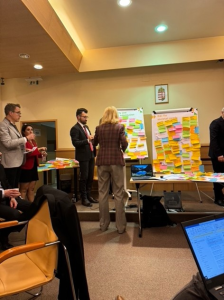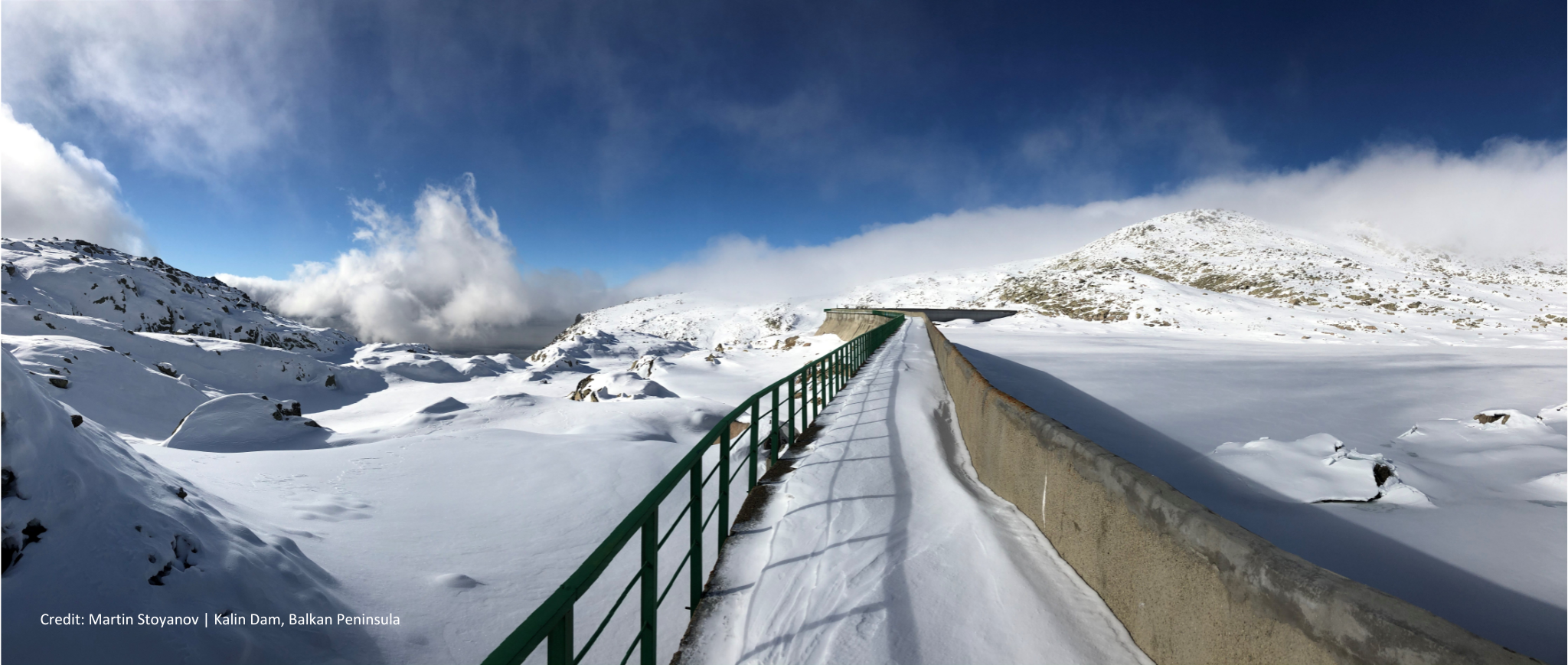UNIFYING THE VOICES OF HYDROPOWER
BRUSSELS HYDROPOWER DAY 2025 - Contribution of hydropower flexibility and storage in the safe energy transition in partnership with the environment under climate change
Mark your calendars for April 8 and don't miss out on this event in Brussels!
Join us for the Brussels Hydropower Day 2025, a hybrid conference taking place both in-person at the Le Bouche à Oreille and virtually via live stream. The Brussels Hydropower Day 2025 is your gateway to engaging with stakeholders and decision-makers shaping the future of the hydropower sector in Europe. This conference serves as a crucial platform for discussing the challenges and opportunities surrounding hydropower deployment amidst the energy transition.
There are many reasons why you shouldn't skip out on this event:
- Gain insights into the pivotal role of hydropower and energy storage in navigating uncertainties such as economic fluctuations, market dynamics, and climate change.
- Learn from industry leaders about best practices in hydropower deployment, including strategies for electricity market design, flexibility enhancements, and meeting social and environmental standards.
- Participate in discussions on collaboration across sectors within the SET Plan, exploring pathways for seamless energy system integration and ensuring a resilient and adaptable energy supply.
- Stay updated on the latest initiatives of ETIP HYDROPOWER, driving towards a unified voice for hydropower across Europe.
Event Details:
- Date: April 8th, 2025
- Time: 9:15 AM – 4:15 PM CET
- Location: Le Bouche à Oreille (In-person) and Online (via live stream)

WEBINAR: Boosting Hydropower Beyond the Project with FITHydro, XFLEX HYDRO, and HYPOSOOn 26 February 2025, from 13:30 to 15:00 CET, the latest session in the webinar series “Boosting Hydropower: Beyond the Project” will present three of the most successful hydropower projects that have concluded in recent times. Organised by the ETIP HYDROPOWER project, this session will present the outputs of three EU research projects on hydropower. Featured Projects and Presenters:
The webinar will also feature contributions from Anton Schleiss from the International Commission on Large Dams (ICOLD), who will be presenting ETIP HYDROPOWER. This webinar will provide an opportunity to learn about the latest research developments in hydropower across Europe. How to Join: Interested participants can register for the webinar HERE. You can find the agenda also HERE.
|
ETIP HYDROPOWER at the SET Plan Conference 2024For the first time, ETIP HYDROPOWER, represented by Anton Schleiss from the Secretariat, participated in a SET-Plan conference. The theme of the event was Scaling Up Research, Innovation, and Competitiveness in Clean Energy Technologies. In terms of technology, the conference focused almost exclusively on wind and solar energy during the parallel sessions, with some attention given to nuclear energy and batteries. Unfortunately, hydropower was not mentioned during the official high-level opening or the high-level plenary session. Following the official recognition of ETIP HYDROPOWER, we hope to raise awareness of the importance of hydropower at the next SET-Plan Conference in 2025. The Agenda and the links to the streaming of the SET Plan Conference can be found here.
|
Cluster Workshop with IWGs and ETIPs Secretariat in BudapestOn 13 November 2024, the Cluster Workshop with IWGs and ETIPs Secretariats on Task Forces was held in Budapest, Hungary, as a side event of the SET-Plan Conference. In response to a call from the SET-Plan, ETIP HYDROPOWER has delegated the following experts to the newly established Task Forces, which bring together technical experts to address cross-cutting topics:
For Task Force 4 concerns “Skills” which should foster collaboration between industry and academia, no expert from our forum manifested an interest to be part of this Task Force. However, the Scientific Advisory Board of ETIP HYDROPOWER has launched an initiative regarding the assessment of the hydropower education at universities in Europe in collaboration with EERA Hydropower. On behalf of the Secretariat and to represent the hydropower view, Anton Schleiss participated to the cluster workshop on 13 November 2024, which goal was to identify the priorities of the cross-cutting topics in order to inform the future works of the respective Task Forces starting their work in 2025. The workshop was attended by 54 participants. The workshop outcomes can be downloaded here.
|
ETIP HYDROPOWER Presents at HYDRO 2024 in Graz, AustriaThe highly successful HYDRO 2024 conference, which took place in Graz from 18 to 20 November, brought together over 1,300 attendees from more than 70 countries and featured over 100 exhibitors in a large-scale exhibition dedicated to the hydropower sector. ETIP HYDROPOWER had the honor of delivering a presentation during the opening ceremony, titled European Technology Innovation Platform on Hydropower – Strategy, Organization, Actions & Projects. Denis Aelbrecht (EDF), Chair of the Governing Board, began by addressing the question, Which responses to Europe’s Energy, Climate, and Biodiversity Challenges? He highlighted key statistics on hydropower’s role in Europe’s electricity mix, emphasizing the importance of hydropower for system flexibility. He also underscored hydropower’s critical role in securing and decarbonizing Europe’s electricity system. Furthermore, he stressed the importance of ETIP HYDROPOWER as an industry-driven initiative to drive Research & Innovation in the hydropower sector. Following this, Anton Schleiss (ICOLD-EPFL), representing the ETIP HYDROPOWER Secretariat, provided a concise overview of the organization’s structure and objectives. He emphasized its pivotal role in unifying the hydropower sector in Europe, presenting a single voice on key issues. ETIP HYDROPOWER seeks to complement and enhance the work of existing groups and associations rather than duplicate their efforts. Schleiss also shared updates on ongoing initiatives, including the progress made by the platform’s four working groups. To conclude, Atle Harby (SINTEF Energy Research, Norway), a member of the ETIP HYDROPOWER Scientific Advisory Board, presented the Horizon Europe project ReHydro – Demonstration of Sustainable Hydropower Refurbishment. He outlined the project’s specific objectives and expected outcomes, including details about the five demonstration sites located in Switzerland, Norway, Portugal, and France.
|
IEA Task 9 meeting following Hydro 2024 Conference in Graz: Key Insights and UpdatesOn the morning of Thursday 21 November 2024, after Hydro 2024 Conference in Graz (Austria), a meeting was organized by the Task 9 of the International Energy Agency (IEA) Technology Collaboration Programme (TCP) on Hydropower. Some key messages are reminded hereunder: TCP Coordination Group on Energy System FlexibilityOne of the central discussions of the session highlighted the importance of integrating innovative measures to improve energy system flexibility. The need for enhanced collaboration across three key components of the energy system was emphasized:
The session stressed the need to strengthen cooperation, particularly on emerging energy shifts such as Power to Heat (P2H) and Power to Fuels (P2F). Looking ahead, opportunities for collaboration include the IEA Wind TCP and IEA Hydropower TCP ExCo Meeting, which will take place from May 19-23, 2025, in Oslo and Gaustablikk, Norway. For more information, visit the conference page. LDES & VREAustralia’s National Electricity Market (NEM) faces significant challenges with curtailment and spillage of Variable Renewable Energy (VRE). In 2023, 2% of the total NEM demand was curtailed or spilled, with a forecasted 15-20% of VRE energy expected to be curtailed annually as VRE output increases. This leads to inefficiencies, as seen in a case where 15.6 GWh of energy was spilled over three days, followed by a 19.2 GWh deficit, causing price inflation. The session posed critical questions: How can we ensure new VRE investments despite these high levels of waste? Can we leverage Value-Adjusted Levelized Cost of Energy (VALCOE) as a tool to better assess these issues? In conclusion, the discussions pointed to the need for better metrics to evaluate capacity increases, storage, and flexibility services, particularly from hydropower. Task 9 is tasked with further developing the VALCOE concept to improve these evaluations. Hydropower in the European Union: current activities at the JRCA presentation on hydropower in the EU discussed the use of existing databases to assess energy storage capacities in Reservoir-Based Storage Hydropower (RSHP) and Pumped-Storage Hydropower (PSH) systems. Key data highlighted included:
Following extensive discussion, it was suggested that a new task dedicated to PSH could be formed within the IEA Hydropower programme, addressing technical, financial, and regulatory aspects. This proposal will be further explored in the upcoming IEA meetings. For more information, see the 2024 Clean Energy Technology Observatory Hydropower Report. Updates from Japan on Pumped Storage HydropowerJapan expressed interest in assessing the value of pumped storage power generation and improving its business feasibility. The proposal will be submitted in detail at the next ExCo meeting. World Bank’s Focus on HydropowerThe World Bank is prioritizing hydropower as a clean energy technology to support the global transition to net-zero emissions. As part of the IEA’s Net Zero Scenario, the World Bank projects the deployment of 7,000 GW of renewable energy capacity by 2030 to meet the Paris Agreement's climate goals. In 2024, the Bank supported the development of 11.3 GW of hydropower capacity, with an additional 10.7 GW in the pipeline. The Bank’s Energy Sector Management Assistance Program (ESMAP) works to remove barriers to transformational hydropower projects and assist in hydropower asset upgrades to meet future flexibility demands. Environmental Constraints in Hydropower SchedulingLinn Emelie Schäffer presented research on incorporating environmental constraints in hydropower scheduling models. The study showed that including environmental considerations, such as flood and drought management, could improve economic performance by up to 2.6%. As market conditions change, the importance of incorporating flexibility into decision support tools is becoming increasingly evident. |
ETIP HYDROPOWER Announces the Winner of the Winter Postcard Contest and Wishes You a Happy Winter Holiday Season!The ETIP HYDROPOWER team is excited to announce the winner of the Winter Postcard Contest, which aimed to celebrate the beauty of hydropower during the winter months by showcasing snow-covered landscapes, icy reflections, and the resilience of hydropower in harmony with nature. Winning Photograph: Martin Stoyanov – This stunning photograph features the Kalin Dam in winter, the highest dam on the Balkan Peninsula. Located at 2,394 meters above sea level in the Rila Mountain, the Kalin Dam is breathtaking in its icy splendor. Access to the dam in winter is extremely challenging, but its beauty is well worth the effort, explains Martin. The photograph will be featured on ETIP HYDROPOWER's official postcards, website, and social media channels to spread winter cheer and highlight the importance of hydropower in a sustainable future. We thank all participants for their wonderful submissions, capturing the magic of hydropower during the colder months. Warm wishes for a joyful winter from the ETIP HYDROPOWER team! For more information, visit our website and keep celebrating the power of hydropower through all seasons!
|
Webinar Recap: Hydropower Plant and Battery Coupling: Advantages and ChallengesOn 12 December 2024, ETIP HYDROPOWER hosted the webinar titled “Hydropower Plant and Battery Coupling: Advantages and Challenges”. The session, which took place from 15:00 to 16:30 CET, focused on the integration of battery storage technologies with hydropower plants, exploring how this coupling can enhance energy efficiency, operational flexibility, and sustainability. The webinar featured experts from the field of hydropower and energy storage. Their presentations highlighted the potential of combining hydropower with battery systems to create more resilient and adaptable energy solutions. Key contributions included:
The webinar highlighted the critical role of innovation and collaboration in advancing hydropower-battery integration. Speakers discussed the benefits of hybrid energy systems, such as improved operational flexibility, the ability to store excess energy, and enhanced capacity to meet peak demand, all while reducing emissions and promoting sustainability. This session reinforced the growing importance of energy storage technologies in Europe’s clean energy transition, with hydropower and battery coupling offering a promising path toward a more flexible and resilient energy system. You can rewatch the session on our YouTube channel or via the miniature below:
|
ETIP HYDROPOWER Virtual Postcard Competition is back!Celebrate the beauty of winter and hydropower with ETIP HYDROPOWER’s "Hydropower Through the Winter Lens" competition. Capture the magic of snow-covered landscapes, icy reflections, and the resilience of hydropower in harmony with nature. Themes to Explore:
Submission Details: For more details on participation and submission guidelines, please click here
|
Webinar Recap: Boosting Hydropower with SHERPA, RevHydro and STOR-HYOn 6 December 2024, the latest session of the webinar series “Boosting Hydropower: Best Practices for Research” brought together experts and researchers to share recent developments in hydropower technology. Organised by the ETIP HYDROPOWER project, the event highlighted key innovations and introduced findings from the 2024 Clean Energy Technology Observatory (CETO) report. Three European-funded research projects—new Solutions for Hydropower plants to Enhance operational Range, Performance and improve environmental impAct (SHERPA), Revolutionary Refurbishment for an Efficient and Eco-friendly Hydropower (RevHydro), and INNOVATIVE STORAGE TECHNOLOGY AND OPERATIONS IN HYDROPOWER (STOR-HY)—were showcased, each addressing challenges related to hydropower plant efficiency, sustainability, and adaptability. Project highlights were:
OTHER KEY CONTRIBUTIONS:The webinar also included presentations by Emanuele Quaranta from the Joint Research Centre (JRC), who shared insights from the Clean Energy Technology Observatory (CETO) Hydropower 2024 report, highlighting hydropower’s role in the EU’s clean energy transition and a research paper on "Considerations on the existing capacity and future potential for energy storage in the European Union's hydropower reservoirs and pumped-storage hydropower". ACCESS THE PRESENTATION HERE. In addition, Anton Schleiss from the International Commission on Large Dams (ICOLD), also provided an overview of ETIP HYDROPOWER’s contributions to innovation and policy support in the sector. ACCESS THE PRESENTATION HERE. The session reinforced the importance of research and innovation in ensuring the continued relevance of hydropower within Europe’s energy landscape. The projects presented demonstrated how modernisation, environmental responsibility, and resilience are integral to the future of the sector. The webinar series remains a valuable platform for knowledge exchange and collaboration, supporting hydropower’s contribution to achieving the EU’s clean energy objectives. You can rewatch it on our Youtube channel or via the miniature below: |







